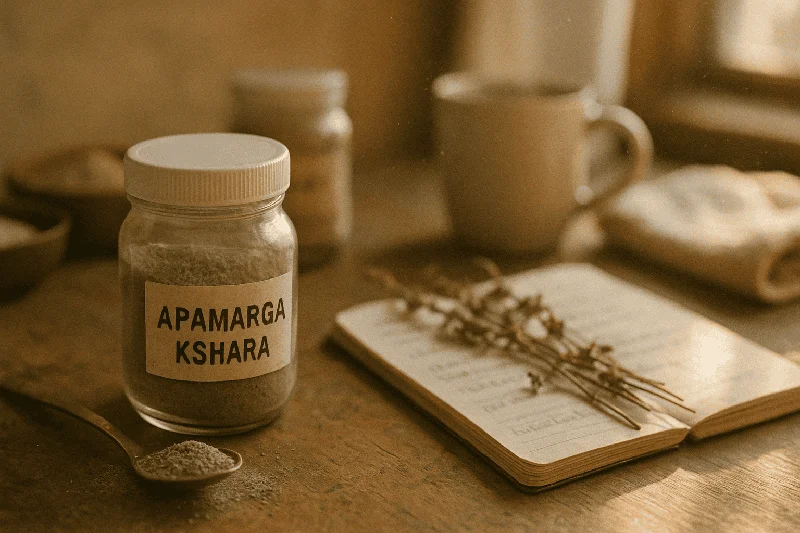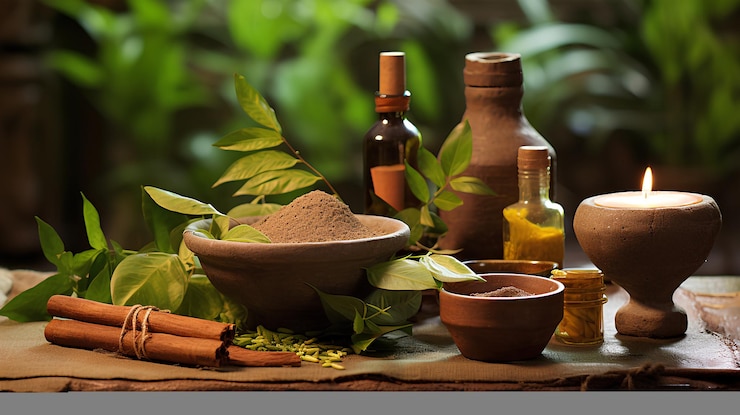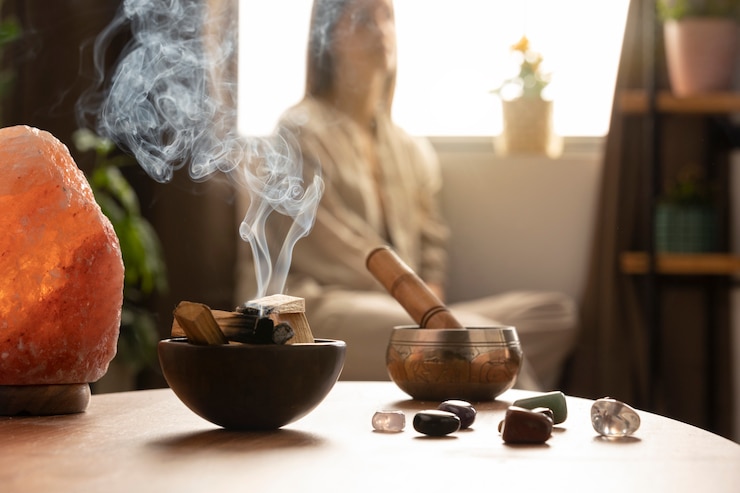Ask Ayurvedic doctor a question and get a consultation online on the problem of your concern in a free or paid mode. More than 2,000 experienced doctors work and wait for your questions on our site and help users to solve their health problems every day.
Shop Now in Our Store
Apamarga Kshara Uses: Comprehensive Guide for Health & Wellness

Introduction
Imagine encountering an ancient remedy meticulously described in classical Ayurvedic texts, now increasingly recognized by modern integrative medicine. Known as apamarga kshara, this alkali-based preparation comes from the plant Achyranthes aspera (commonly called apamarga), traditionally celebrated for its potential benefits in wound care, digestive health, and more. How do these historical claims hold up under modern scientific scrutiny? In this comprehensive article, we will delve into the apamarga kshara uses, its preparation, pharmacological profile, practical applications, and the current research landscape. Whether you practice Ayurveda, seek integrative healthcare solutions, or simply want to learn about time-tested remedies, read on to discover the fascinating world of apamarga kshara.
Understanding Apamarga Kshara
Definition and Key Characteristics
Apamarga kshara is a caustic extract derived by burning specific parts of the apamarga plant—leaves, stems, and sometimes seeds—and processing the ash into an alkaline preparation. The Sanskrit term “kshara” translates to “alkali,” highlighting the product’s high pH and unique properties that aid in cauterizing and cleansing. In Ayurveda, this preparation is believed to help balance bodily systems by promoting the removal of toxins and optimizing tissue function. From an integrative standpoint, apamarga kshara is increasingly studied for its wound-healing and antimicrobial potential.
Ayurvedic Perspective
Within Ayurveda, kshara preparations like apamarga kshara are reputed for their shodhana (cleansing) and ropana(healing) attributes. Ancient texts such as the “Sushruta Samhita” emphasize the importance of alkali-based remedies for procedures like cauterization and debridement. Apamarga kshara, in particular, is praised for its precise action in removing necrotic tissue without excessively damaging surrounding healthy tissue.
Historical and Cultural Context
Roots in Ayurveda
The earliest references to apamarga kshara appear in classical Ayurveda compendiums—“Charaka Samhita,” “Sushruta Samhita,” and others. Apamarga has also been mentioned for its religious significance, often associated with purification rituals. Over centuries, Ayurvedic practitioners refined the process of making kshara from this plant, aligning it with various health conditions.
Global Use
Beyond India, Achyranthes aspera (the source plant) appears in other traditional medical systems. In Southeast Asia, it has been applied to manage wounds, skin infections, and even snake bites. Some African folk practices have incorporated the plant into remedies for malaria and gastrointestinal discomfort, pointing to its widespread recognition in different cultural contexts.
Active Components and Pharmacological Profile
Key Chemical Constituents
-
Alkaline Salts: When the apamarga plant is incinerated, the resulting ash contains minerals like potassium carbonate and sodium carbonate, both known for their caustic and antimicrobial properties.
-
Saponins and Alkaloids: Various laboratory studies highlight that Achyranthes aspera contains saponins and certain alkaloids, which may exhibit anti-inflammatory and analgesic effects.
-
Tannins and Flavonoids: These natural compounds often play a role in antimicrobial and antioxidant activities, beneficial for tissue repair.
Research Highlights
-
A 2020 review in the Journal of Ethnopharmacology noted that extracts from the apamarga plant effectively inhibited some common bacterial strains, suggesting a potential disinfectant or antimicrobial action.
-
A 2018 PubMed-indexed study reported alkaloids in Achyranthes aspera showing promise in managing inflammation and supporting tissue regeneration, pointing to potential benefits in wound care.
Traditional Apamarga Kshara Uses
Wound Management
One of the most common apamarga kshara uses in Ayurveda is as a cauterizing agent. By applying it to chronic wounds or ulcers, practitioners aim to remove necrotic tissue and foster a cleaner, more rapid healing environment. This approach, documented in classical texts, remains in practice, particularly for chronic or non-healing wounds under the supervision of Ayurvedic professionals.
Digestive Health
In Ayurvedic theory, apamarga kshara is believed to aid in digestion by breaking down “ama” (metabolic toxins). When used internally in carefully controlled doses, it may alleviate gas, bloating, and other mild gastrointestinal issues. However, modern research on its internal efficacy is limited, and consultation with a qualified practitioner is advised before use.
Hemorrhoids and Fistula Management
An essential mention in Ayurvedic texts is the role of apamarga kshara in treating hemorrhoids and anal fistulas. Because of its caustic quality, it can help reduce inflammation, control bleeding, and shrink hemorrhoidal masses when applied correctly. Studies show promising outcomes, especially when combined with other lifestyle measures like fiber-rich diets and proper hydration.
Skin Disorders
Some Ayurvedic practitioners incorporate apamarga kshara into topical treatments for skin conditions such as eczema or fungal infections. Its reported anti-inflammatory and antimicrobial properties may complement other herbal preparations, though individual responses vary.
Modern Research and Clinical Evidence
Hemorrhoids (Arsha)
A 2019 study in the Ayurveda Journal tracked patients with bleeding hemorrhoids who applied an ointment containing apamarga kshara. Over a four-week period, participants reported marked reductions in pain, bleeding, and swelling. While these findings are positive, larger randomized controlled trials would help confirm clinical protocols.
Antimicrobial and Wound-Healing Properties
Several small-scale observational studies have shown that apamarga kshara applications may expedite wound closure in conditions like diabetic foot ulcers, especially when used alongside standard medical interventions. These studies often point to apamarga kshara’s potent alkaline nature as pivotal in preventing bacterial colonization and supporting debridement.
Research Gaps
Despite encouraging results, many published works are preliminary, with small sample sizes or limited controls. More comprehensive clinical trials with standardized apamarga kshara preparations are necessary to establish evidence-based guidelines on dosage, frequency, and safety.
Potential Health Benefits and Mechanisms
Antimicrobial Action
The high pH environment created by apamarga kshara inhibits the growth of certain pathogens, making it a candidate for addressing infections. The presence of tannins, flavonoids, and saponins can also exert antimicrobial effects, potentially reducing the risk of secondary infection in wounds.
Cauterizing and Debriding
Its caustic effect helps remove dead or damaged tissue, promoting the formation of healthy granulation. This targeted tissue destruction makes apamarga kshara valuable in chronic wound management or specific surgical procedures in Ayurveda.
Anti-Inflammatory Potential
By mitigating local inflammation, apamarga kshara may aid in pain relief and swelling reduction. Lab-based findings suggest that saponins and alkaloids play a role in moderating the body’s inflammatory response.
Hemostatic Properties
Apamarga kshara’s constricting effect on blood vessels and tissues explains its frequent use for bleeding hemorrhoids and certain types of bleeding wounds. While historical evidence is robust, modern verification remains ongoing.
Preparing Apamarga Kshara: Traditional Insights
Step-by-Step Overview
-
Collection: Fresh apamarga plants are gathered, ensuring they are free from contaminants.
-
Drying: Leaves, stems, and seeds are thoroughly dried in sunlight to eliminate moisture.
-
Incineration: The dried plant material is burned to produce ash, which is then finely sieved.
-
Dissolution and Filtration: Ash is blended with water, and the mixture is filtered to remove insoluble waste.
-
Concentration: The filtered solution undergoes gentle heating until the excess water evaporates, leaving the highly alkaline residue—apamarga kshara.
Caution in Preparation
Because of its strong alkaline nature, minor variations in plant quality, burning temperature, or filtration can affect apamarga kshara’s potency. This is why most clinicians advise obtaining kshara preparations from reputable sources, such as certified Ayurvedic pharmacies or practitioners.
Clinical Applications: Evidence-Based Insights
Hemorrhoids Treatment
-
Topical Ointments or Suppositories: Formulations with apamarga kshara may reduce discomfort, bleeding, and swelling. Patients often combine these measures with dietary changes (increased fiber and water) and sitz baths.
-
Ayurvedic Protocol: In certain clinics, apamarga kshara is integrated into broader “kshara karma” procedures that also involve medicated oils and supportive herbs.
Chronic Wound Management
-
Diabetic Foot Ulcers: Apamarga kshara’s ability to neutralize infection and debride necrotic tissue shows promise in speeding up recovery, especially when merged with modern antibiotics and proper foot care.
-
Surgical Dressings: Some integrative practitioners add apamarga kshara to wound dressings for enhanced antiseptic action, though large-scale clinical studies are still needed.
Digestive Health Support
-
Internal Use: When properly prescribed, apamarga kshara may help alleviate mild indigestion or gas. Nonetheless, patients should approach internal consumption with caution and under professional supervision due to its potent alkaline nature.
Skin and Dermatological Uses
-
Topical Pastes: Conditions like eczema or fungal infections might benefit from the mixture of apamarga kshara in prescribed concentrations.
-
Caution: Overuse or improper application can irritate healthy skin, reinforcing the need for qualified guidance.
Precautions, Side Effects, and Contraindications
H3: Potential Risks
-
Skin Irritation or Burns: Improper handling can lead to chemical burns, underscoring the importance of precise usage.
-
Allergic Reactions: Though uncommon, some individuals may experience redness or itching.
-
Limited Pediatric Use: Due to their sensitive skin, children require specially formulated or highly diluted versions if at all.
Professional Consultation
Before adopting apamarga kshara in any health regimen, individuals with existing medical conditions like diabetes or coagulation disorders should consult both Ayurvedic and conventional healthcare providers. Interaction with prescription medications is not fully documented, making open communication with professionals essential.
Disclaimer
This article is intended for educational purposes. It does not replace professional medical advice, diagnosis, or treatment. Always consult a qualified healthcare provider or certified Ayurvedic practitioner for personalized recommendations.
Frequently Asked Questions (FAQ)
Q1. Is apamarga kshara safe for everyone?
Not necessarily. While it has a longstanding history in Ayurveda, its caustic properties mean it should be approached with caution. People with sensitive skin, open wounds, or chronic health conditions must consult a professional before use.
Q2. Can I prepare apamarga kshara at home?
Theoretically, yes. However, the process is intricate. Achieving the correct potency requires expertise in plant selection, incineration, and filtration. Most experts advise purchasing standardized products from reputable Ayurvedic pharmacies or consulting a skilled practitioner for safe usage.
Q3. How does apamarga kshara differ from other herbal extracts?
Unlike herbal extracts that are generally water- or alcohol-based, apamarga kshara is an alkaline ash solution. Its unique chemical composition allows for cauterizing and antimicrobial actions that differ markedly from typical herbal infusions or decoctions.
Q4. Are there global guidelines for using apamarga kshara?
Specific global guidelines are lacking. However, organizations such as the World Health Organization (WHO) and the National Institutes of Health (NIH) encourage evidence-based assessments of traditional medicine. Ongoing research aims to establish clearer safety and efficacy standards.
Q5. Does apamarga kshara interact with prescription drugs?
Definitive research on drug interactions is limited. If you are on any prescription medications, discuss with your healthcare provider before using apamarga kshara to avoid unforeseen complications.
Conclusion and Call to Action
From chronic wound management to hemorrhoid care, apamarga kshara uses draw on centuries of Ayurvedic knowledge and show potential synergy with modern medical practices. While early scientific findings hint at its antimicrobial, anti-inflammatory, and cauterizing qualities, more rigorous clinical trials remain necessary to validate standardized protocols, dosages, and long-term safety. If this exploration of apamarga kshara has piqued your interest, please share this article to inform others about evolving Ayurvedic and integrative therapies. Consider subscribing or leaving a comment to engage in further conversation about traditional remedies, evidence-based research, and holistic healthcare approaches. For personalized guidance, always consult licensed medical and Ayurvedic professionals who can help tailor apamarga kshara—or any natural remedy—to your specific health needs.
This article is checked by the current qualified Dr Sujal Patil and can be considered a reliable source of information for users of the site.



